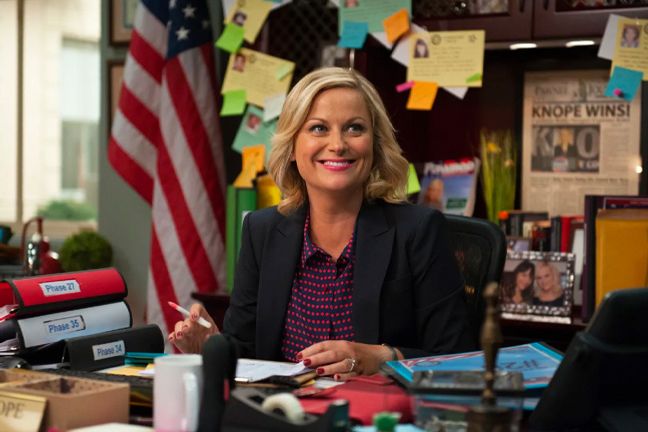We recently had the privilege of delivering a webinar to more than 500 attendees on how to stop Nuclear Verdicts® with Taylor Swift lyrics. Just kidding! We wish it was that simple. We did, however, spend two hours diving into the Nuclear Verdicts® Defense Methods through the cat eyes of Ms. Swift. Embodying our favorite eras (Ashley – Lover; Cayce – Reputation) we taught some lessons about trial strategy, and life! What follows is a list of our top takeaways, and since we would not be true Swifties if it was any other number, there are 13!
- Authenticity goes a long way. Whether your performance space is the well of a courtroom or a stadium that seats 100,000 people (and if it’s the latter: Taylor, please call us. We have some friendship bracelets for you), authenticity is your best friend. Authentically owning who you are and the role you have played to that point is critical to connecting with the audience that really matters: your jurors.
- Vulnerability invites jurors to relate to you, and to your client. And who knows? They might just like you for you! Taylor Swift’s willingness to share the most vulnerable pieces of her life with her fans is what has fostered their unwavering support for her. (Have you heard she invented football?! She can do anything!) You do not need to write a number one hit based on your heartbreak to achieve the same effect; you need only be willing to be human. Plaintiffs’ counsel figured this out a long time ago, and their willingness to share themselves vulnerably can be the death knell to a defendant’s case if the defendant and their counsel are not willing to do the same thing. Embrace the humanity of the situation and be willing to be real. As Tyson & Mendes Strategic Managing Partner Bob Tyson tells us so frequently, “Just be a good human.” Being a good human requires you to be vulnerable. It may be uncomfortable, but it is crucial at trial.
- Empathy is the great connector. In most claims and cases, there actually is an injured person on the other side of the table. Set aside your bottom line for a moment and view the injured or affected party with empathy. Express that empathy in how you treat them. It may lead to an earlier and more reasonable settlement, and even if it does not, you will have done your job with greater care and attention than you would have otherwise. If you engage empathetically, the jury will see that. If you fail to do so, they may end up asking, “Why you gotta be so mean?”
- Storytelling is not just the benchmark of Taylor Swift’s award-winning writing style – it is also how trials are won! What’s the Love Story behind your client’s business? Dig deep to find out, and then tell that story to the jury. There is power to be found in the human stories behind our clients, especially our corporate clients. Use it!
- Creativity offers a powerful tool in how you tell your story to the jury. Taylor Swift has discussed her writing process by describing the different writing utensils she imagines using to craft songs of varying styles: the quill (think: Ivy); the fountain pen (think: All Too Well); and, the glitter gel pen (think: Shake It Off).[i] Swift has identified in each of these styles specific creative tools that resonate with her audience: historical figures and references, modern storylines with a poetic twist, etc. Get creative in how you engage your audience!
- Caring is crucial for defusing the juror anger we know leads to Nuclear Verdicts®. It’s also one of the reasons Taylor Swift has become so beloved: what other pop star has fans over to her home to bake cookies[ii]?! You do not need to (nor should you!) send the plaintiff baked goods, but you must demonstrate your caring at every opportunity, regardless of whether the jury is watching or not.
- Adapt. Taylor Swift has moved from country, to pop, to folk, to rock, and back again. She traverses genres fearlessly and adapts to changing tastes and inspirations. What is holding the defense bar back from adapting in this same way? Everything Has Changed, and it is time for us to change, too! Our clients deserve counsel who will adapt to changing landscapes, which brings us to the proven Nuclear Verdicts® Defense Methods!
- Accept responsibility for something in every case (even when going for a defense verdict), and in so doing, you will: validate juror anger to defuse it, enhance your credibility, and invite jurors to consider who else might bear some responsibility. Very often, this will be plaintiff! Now, that Hits Different, doesn’t it?!
- Personalize the corporate defendant. It is harder to punish someone you know, and nearly impossible to punish someone you like! Remember the point above about storytelling? This is the story of who the insured is. Who are the humans behind the business? What legacy are they hoping to leave their families? Choose a corporate representative who will put a human face to the corporate name, and show up in person, day in and day out. Ensure this person is someone who will convey the company’s culture and contributions while engaging jurors with a likable (and honest) narrative.
- Give a number. Give it early, give it often, make it reasonable, and base it on evidence. Yes, even when seeking a defense verdict! While it might feel counterintuitive, research has shown the chances of a defense verdict actually increase when defense gives a number.[iii] And to make use of the psychological tools of primacy and recency, it must be given as early as possible (voir dire, if you can!), and repeated frequently. It can be any number, (22 has a nice ring to it, doesn’t it?), but decide on it pretrial and come back to it again and again.
- Argue pain and suffering – talk about the impact of the incident. Arguing pain and suffering is a two-prong approach when done effectively. First, you must address the impact of the accident or incident on the plaintiff. This is beyond sub rosa; it is your opportunity to tell the good news and offer hope. Jurors will welcome a hopeful (but realistic) perspective on the plaintiff’s life. This requires you to engage in discovery and deposition questions that reveal the positive experiences the plaintiff is still able to enjoy. Can you draw stars around the plaintiff’s scars? Do it!
- Argue pain and suffering – talk about the impact of money on the plaintiff. The second prong of arguing pain and suffering requires you to ask potentially uncomfortable questions. Ask what keeps the plaintiff up at night. What is the biggest source of her stress? What brings her the most joy? How does she spend her free time? What’s her dream vacation? The court reporter might look at you like you’re unglued, but these questions will let you show the jury the many things your number can do for the plaintiff. Not only does this show you have cared enough to get to know this specific plaintiff, but it reminds the jury of the actual value of money (so they remember a million dollar couch is… unnecessary).
- Collaborate. Some of Taylor Swift’s biggest hits have been the result of her collaborating with producers and other megastars (anyone else love her friendship with Ed Sheeran as much as we do?). Who else collaborates regularly? The plaintiffs’ bar! They share everything from effective trial strategies to artichoke dip recipes. Ok, we cannot confirm the latter is true, but would you be surprised? Our strength lies in our willingness to partner, to share information, and learn from each other. To that end, we would love it if you joined us at the Nuclear Verdicts® Defense Institute for an intensive, hands-on trial academy focused on stopping Nuclear Verdicts®. You’re (not!) On Your Own, Kid!
Keep Reading
More by this author
Sources
[i] https://www.forbes.com/sites/carminegallo/2022/10/02/follow-taylor-swifts-creative-process-to-improve-business-storytelling-skills/?sh=57426f6a1948
[ii] https://www.eonline.com/news/581695/taylor-swift-bakes-cookies-for-fans-at-1989-listening-session-talks-ex-harry-styles-and-shows-off-cat-olivia-benson
[iii] Campbell, J., Chao, B., Robertson, C., & Yokum, D. (2016). Countering the Plaintiff’s Anchor: Jury Simulations to Evaluate Damages Arguments.

 Cannabis Workers Allege Quota to Trim 4 Pounds a Day Violates the California Labor Code
Cannabis Workers Allege Quota to Trim 4 Pounds a Day Violates the California Labor Code
 The Ninth Circuit Reminds Us: Every Word Matters
The Ninth Circuit Reminds Us: Every Word Matters
 NO WAY, PRO SE! The Consequences of Abusing the Judicial System as a Pro Se Litigant in Colorado
NO WAY, PRO SE! The Consequences of Abusing the Judicial System as a Pro Se Litigant in Colorado
 Victim of Financial Mismanagement or Unlawful Retaliation? New Jersey City University Program Founder Claims School Retaliated After Reporting Alleged Sexual Harassment
Victim of Financial Mismanagement or Unlawful Retaliation? New Jersey City University Program Founder Claims School Retaliated After Reporting Alleged Sexual Harassment
 “Real Housewives” Gets a Reality Check
“Real Housewives” Gets a Reality Check
 Missing a Chapter: Insufficiency of Expert Deposition Testimony in Medical Malpractice Litigation
Missing a Chapter: Insufficiency of Expert Deposition Testimony in Medical Malpractice Litigation
 Crash Course: Why Summary Judgment Misses the Mark in Illinois Multi-Cause Limousine Crash Collision
Crash Course: Why Summary Judgment Misses the Mark in Illinois Multi-Cause Limousine Crash Collision
 Bitter Truths: Lead, Cadmium, and Defective Pleadings in California Chocolate Class Action
Bitter Truths: Lead, Cadmium, and Defective Pleadings in California Chocolate Class Action
 The Law of Unintended Consequences: Including Insurance Brokers in Litigation Strategy Communication May Waive the Attorney-Client Privilege
The Law of Unintended Consequences: Including Insurance Brokers in Litigation Strategy Communication May Waive the Attorney-Client Privilege
 You Poetic, Noble Land Mermaid: A Celebration of “Galentine’s Day”
You Poetic, Noble Land Mermaid: A Celebration of “Galentine’s Day”
 Settlement on the Slopes of Instructional Error
Settlement on the Slopes of Instructional Error
 The Covid-19 Naughty or Nice Coverage List
The Covid-19 Naughty or Nice Coverage List
 Can Taylor Swift Help Prevent Nuclear Verdicts®?
Can Taylor Swift Help Prevent Nuclear Verdicts®?
 No “Getaway Car” For a Test Drive Gone Wrong
No “Getaway Car” For a Test Drive Gone Wrong
 “Thinking Out Loud” About Ed Sheeran’s Use of The Nuclear Verdict Defense Methods
“Thinking Out Loud” About Ed Sheeran’s Use of The Nuclear Verdict Defense Methods
 Applying the Tyson & Mendes Methods in a Case Involving Sexual Abuse in a Colorado Hospital
Applying the Tyson & Mendes Methods in a Case Involving Sexual Abuse in a Colorado Hospital